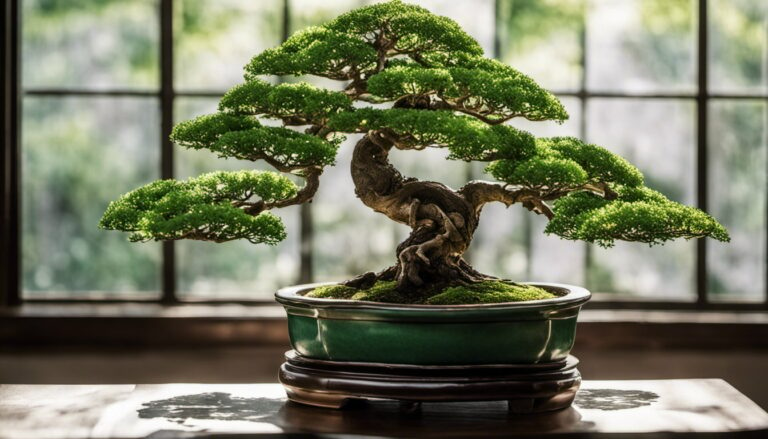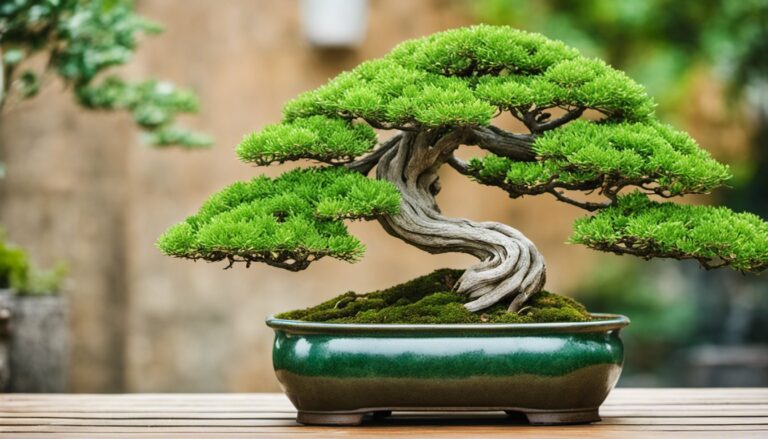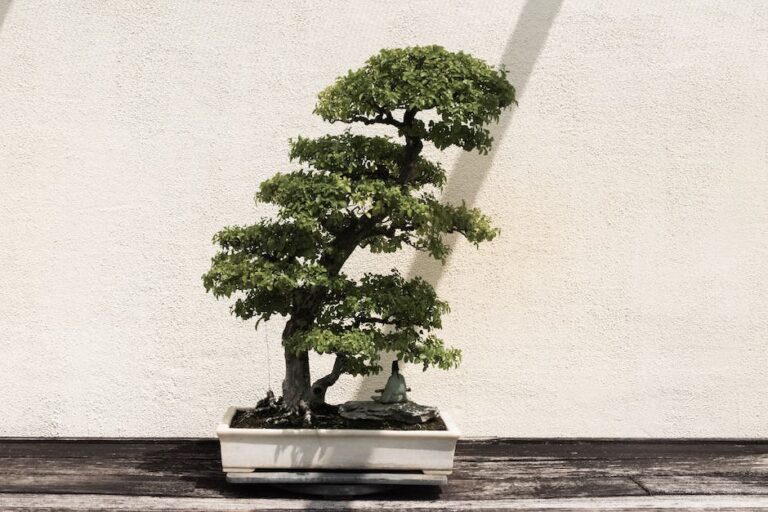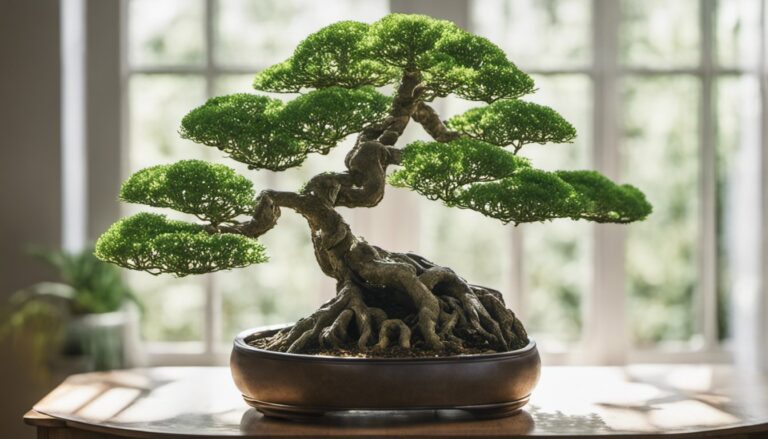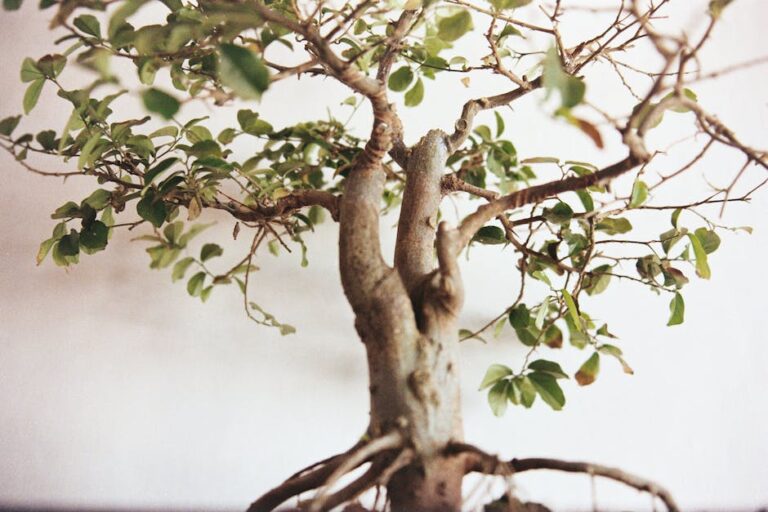How To Turn a Lemon Tree Into a Bonsai
Want to learn how to turn a lemon tree into a bonsai tree? In this article, we will guide you through the process of starting and caring for a bonsai lemon tree, allowing you to unleash its full potential.
From finding the perfect seeds to shaping and caring for your tree, we will provide step-by-step instructions and valuable tips.
Discover why Meyer lemons are the ideal choice for bonsai and learn how to create a healthy growing environment.
Join us on this exciting journey as we delve into the key features of a bonsai lemon tree and cultivate a captivating masterpiece together.
Origins
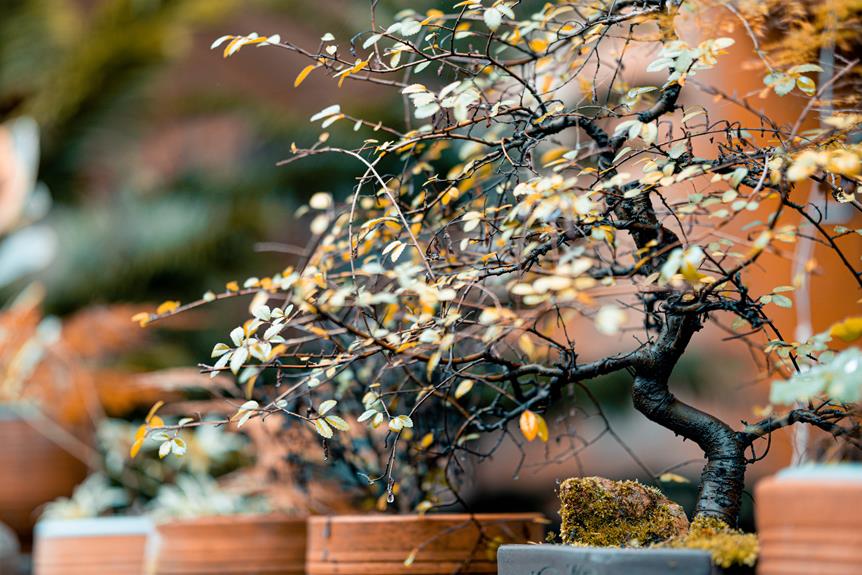
To understand the origins of a bonsai lemon tree, it’s important to delve into the history of Meyer lemons and their suitability for bonsai cultivation.
Meyer lemons, known for their compact size and suitability for bonsai, have a fascinating background. They were first introduced to the United States in the early 1900s by Frank Meyer, a plant explorer.
Meyer lemons are a cross between a lemon and a mandarin orange, giving them a unique flavor and appearance. Due to their smaller size and ability to thrive in containers, they’ve become a popular choice for bonsai enthusiasts.
Their origins and characteristics make them an ideal candidate for creating a stunning bonsai lemon tree.
Definition
To understand what a bonsai lemon tree is, imagine a small, meticulously pruned lemon tree that’s cultivated in a shallow container to create a stunning miniature version of the majestic citrus tree. Bonsai, which means ‘tray planting’ in Japanese, is the art of growing and shaping trees or plants in containers. It originated in China over a thousand years ago and was later refined by the Japanese.
Bonsai trees are carefully trained and pruned to create a harmonious and balanced appearance. The bonsai lemon tree, specifically, is a unique variation of the traditional bonsai, featuring beautiful green foliage and fragrant white flowers with a dark purple base. It’s a captivating addition to any collection and a testament to the artistry and patience required to cultivate these miniature masterpieces.
Germinating Bonsai Lemon Seeds
If you’re ready to start your own bonsai lemon tree, there are a few key points to keep in mind.
First, choose the best lemon variety for bonsai, such as Meyer lemons.
Then, follow some tips for successful germination, ensuring you provide the ideal growing conditions.
How long it takes for the seeds to sprout can vary, so be patient and avoid common germination mistakes.
Best Lemon Varieties
You can find the best lemon varieties for germinating bonsai lemon seeds by selecting organic Meyer lemons. Meyer lemons are a great choice because they’re more compact and suitable for bonsai compared to regular lemons. Look for specialty shops that are likely to have organic Meyer lemons with a higher germination rate.
Starting several seeds is recommended in case some don’t survive. Rinse the seeds in cold water to remove particles and plant them about ½ inch deep in moist potting soil. Keep the soil moist and place the seeds in a warm location.
Once sprouted, move the tray to a sunny location and water when the top inch of soil is dry. Remember to wait until the seedlings are at least one year old before shaping them into bonsai.
Tips for Successful Germination
To ensure successful germination of your bonsai lemon seeds, start by selecting a sufficient quantity of organic Meyer lemons from a reputable source. Meyer lemons are more compact and suitable for bonsai compared to regular lemons. Look for specialty shops that are likely to have Meyer lemons available.
Rinse the seeds in cold water to remove any particles and then fill a container or tray with moist potting soil. Plant the lemon seeds about ½ inch deep in the soil and keep it moist.
Place the seeds in a warm location until they sprout. Once sprouted, move the tray to a sunny location and water when the top inch of soil is dry.
Remember to start several seeds in case some don’t survive.
How Long to Sprout
Once you have planted the lemon seeds about ½ inch deep in moist potting soil and placed them in a warm location, it typically takes approximately two to four weeks for the bonsai lemon seeds to sprout.
During this time, it’s important to keep the soil consistently moist and provide the seeds with enough warmth and sunlight. Be patient as the germination process can vary depending on factors like temperature and seed quality. Keep an eye on the soil, looking for any signs of sprouting seedlings.
Once the seeds have sprouted and developed multiple leaves, you can then move them to individual 4-inch containers for further growth.
Ideal Growing Conditions
To create ideal conditions for germinating bonsai lemon seeds, follow these steps:
- Start by rinsing the seeds in cold water to remove any particles.
- Ensure you have a shallow container filled with moist potting soil.
- Plant the lemon seeds about ½ inch deep in the soil.
- Keep the soil moist and place the seeds in a warm location.
- Once the seeds have sprouted, move the tray to a sunny location.
- Ensure the seedlings receive at least 6 hours of sunlight each day.
- Water the seedlings when the top inch of soil feels dry.
- Make sure the container has proper drainage.
With these optimal growing conditions, your bonsai lemon seeds will have the best chance of germinating successfully.
Common Germination Mistakes?
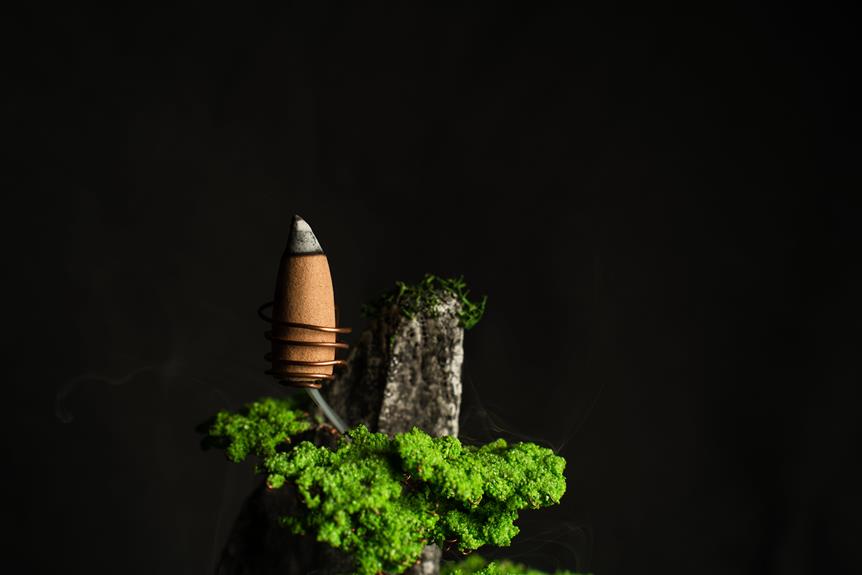
Don’t make these common mistakes when germinating your bonsai lemon seeds.
One mistake to avoid is using seeds from a regular lemon tree instead of a suitable lemon tree for bonsai, such as Meyer lemons. Regular lemons aren’t as compact and suitable for bonsai as Meyer lemons.
Another mistake isn’t starting several seeds. It’s important to start multiple seeds in case some don’t survive.
Additionally, don’t forget to rinse the seeds in cold water to remove any particles before planting them.
Lastly, ensure that you keep the soil moist and place the seeds in a warm location for optimal germination.
Avoiding these common mistakes will increase your chances of successfully germinating your bonsai lemon seeds.
Equipment Needed
Now that you have a good understanding of how to germinate and care for a bonsai lemon tree, it’s important to have the right equipment to ensure success.
Essential tools for bonsai include pruning shears, concave cutters, wire cutters, and a bonsai training wire. Choosing the right equipment is crucial for proper pruning, shaping, and training of your bonsai lemon tree.
Additionally, must-have bonsai supplies include a shallow container or tray for seed germination, pots for individual seedlings, and a well-draining potting soil mix.
Essential Tools for Bonsai
Equip yourself with the essential tools for bonsai to ensure successful shaping and maintenance of your bonsai lemon tree.
You’ll need a few key tools to properly care for your bonsai.
First, make sure you have a pair of bonsai pruning shears. These will allow you to trim and shape your tree with precision.
Additionally, a bonsai wire cutter is essential for adjusting the wires that help train the branches into the desired shape.
A bonsai rake or fork will come in handy for loosening and spreading the soil without damaging the delicate roots.
Finally, a bonsai watering can with a fine nozzle will help you provide the right amount of water without causing excessive runoff.
With these tools in your arsenal, you’ll be well-equipped to care for your bonsai lemon tree and unleash its true beauty.
Choosing the Right Equipment
To properly care for your bonsai lemon tree and unleash its true beauty, you’ll need the right equipment.
First, you’ll need seeds from a suitable lemon tree, preferably Meyer lemons. Look for organic Meyer lemons for better germination rates.
Next, you’ll need a container or tray filled with moist potting soil to plant the seeds. As the seedlings grow, you’ll need individual 4-inch pots to transfer them into. Ensure you have enough pots for each seedling.
You’ll also need regular potting soil mix, which should be slightly acidic and well-draining.
Additionally, make sure to have wires for training and shaping the tree, as well as a light fertilizer designed for acid-loving plants.
Must-Have Bonsai Supplies
To properly care for your bonsai lemon tree and ensure its beauty flourishes, you’ll need essential bonsai supplies.
- First and foremost, you’ll need a shallow container or tray for seed germination.
- Additionally, make sure you have enough pots for each seedling as they grow.
- Regular potting soil mix, which should be slightly acidic and well-draining, will be necessary for planting and repotting the tree.
- For shaping and training the tree, you’ll need wires that are gentle enough not to damage the branches or trunk.
- Pruning shears will be essential for trimming and shaping the tree as it grows.
- Lastly, a light fertilizer designed for acid-loving plants will help provide the necessary nutrients.
With these supplies, you’ll be well-equipped to care for your bonsai lemon tree and enjoy its beauty for years to come.
Instructions
To start growing your bonsai lemon tree, gather the necessary materials and follow these simple steps:
- Find seeds from a suitable lemon tree for bonsai, such as Meyer lemons. Look for organic Meyer lemons for a better germination rate. Meyer lemons are more compact and suitable for bonsai compared to regular lemons. Specialty shops are likely to have Meyer lemons.
- Rinse the seeds in cold water to remove particles, then fill a container or tray with moist potting soil. Plant the lemon seeds about ½ inch deep in the soil. Keep the soil moist and place the seeds in a warm location.
- Once sprouted, move the tray to a sunny location. Water when the top inch of soil is dry. Move seedlings to individual 4-inch containers when they’ve multiple leaves. Wait until the seedlings are at least one year old before shaping them into bonsai.
With these instructions, you’ll be on your way to unleashing the beauty of your very own bonsai lemon tree.
Troubleshooting Pests and Diseases
Combatting pests and diseases is essential for maintaining the health and beauty of your bonsai lemon tree. Here are three key steps to troubleshoot pests and diseases:
- Regularly inspect your bonsai lemon tree for signs of pests such as scale, whitefly, and spider mites. Check the back of the leaves for any signs of infestation.
- Wash the leaves with a stream of water to prevent pests from settling. If you notice any pests, use a stream of water to knock them off the tree. If water doesn’t work, you can try using Leaf Armor Spray, neem oil, or horticultural oil to control the infestation.
- Monitor the overall health of your bonsai lemon tree and take immediate action if you notice any signs of diseases. Common diseases that affect lemon trees include citrus canker, root rot, and citrus scab. Consult a bonsai expert or horticulturist for proper diagnosis and treatment options.
Avoid Common Mistakes
To ensure successful growth and care of your bonsai lemon tree, it’s important to avoid common mistakes that may hinder its development.
One common mistake is overwatering. While it’s important to keep the soil moist, excessive watering can lead to root rot and other fungal diseases.
Another mistake is using the wrong type of soil. Bonsai trees require well-draining soil, so avoid using regular garden soil, which can become compacted and suffocate the roots.
Additionally, neglecting proper pruning and shaping can result in a tree that lacks the desired aesthetic appeal. Regular pruning helps maintain the desired size and shape of the bonsai lemon tree.
Finally, failing to provide sufficient sunlight can stunt the tree’s growth. Make sure to place the tree in a location where it can receive at least six hours of direct sunlight each day.
Advantages and Disadvantages
When considering the advantages and disadvantages of growing a bonsai lemon tree, it’s important to weigh the benefits and challenges that come with nurturing this unique plant.
Advantages:
- Beauty: Bonsai lemon trees are visually appealing with their compact size, delicate green foliage, and fragrant white flowers.
- Aromatic: The lemony fragrance of the bonsai lemon tree adds a pleasant scent to any space.
- Educational: Growing a bonsai lemon tree provides an opportunity to learn about horticulture, patience, and the art of bonsai.
Disadvantages:
- Time and Effort: Nurturing a bonsai lemon tree requires dedication, regular care, and patience.
- Limited Fruit Production: Bonsai lemon trees may produce fruit, but the yield is typically smaller and less frequent compared to full-sized lemon trees.
- Pruning and Maintenance: Shaping and maintaining the bonsai lemon tree can be challenging and time-consuming.
Conclusion
To ensure the successful growth and maintenance of your bonsai lemon tree, it’s essential to provide consistent care and attention.
Starting with the right seeds, such as Meyer lemons, will give you a head start. Remember to rinse the seeds and plant them in moist potting soil, keeping them in a warm location until they sprout.
Once your seedlings have grown, move them to individual containers and place them in a sunny location. Water regularly and provide proper drainage.
Shape your bonsai lemon tree after a year of growth, using wires to train the branches. Keep an eye out for pests and diseases, and take appropriate measures to prevent or treat them.
With dedication and proper care, your bonsai lemon tree will be a beautiful addition to your collection.


